Premium Only Content
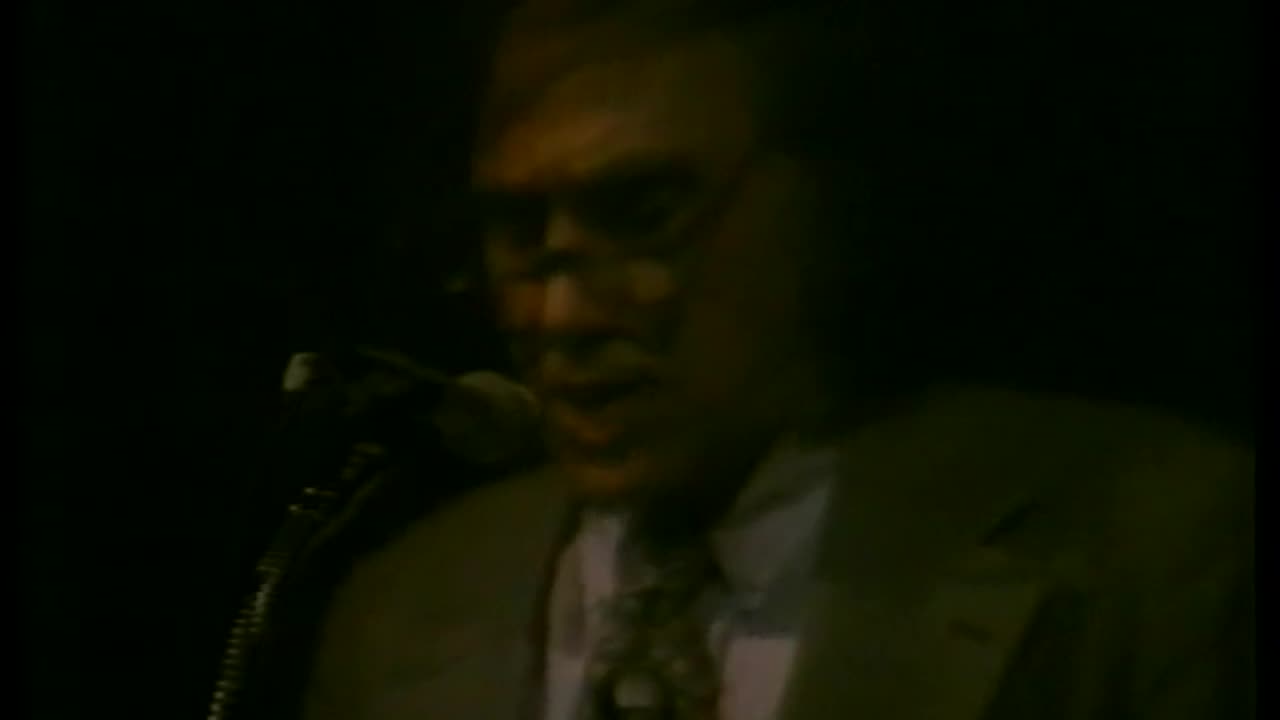
FBI Abuses and the Attacks on our Civil Liberties
The dark side of history: https://thememoryhole.substack.com/
William Moses Kunstler (July 7, 1919 – September 4, 1995) was an American attorney and civil rights activist, known for defending the Chicago Seven.[1] Kunstler was an active member of the National Lawyers Guild, a board member of the American Civil Liberties Union (ACLU) and the co-founder of the Center for Constitutional Rights (CCR), the "leading gathering place for radical lawyers in the country."[2]
Kunstler's defense of the Chicago Seven from 1969 to 1970 led The New York Times to label him "the country's most controversial and, perhaps, its best-known lawyer".[2] Kunstler is also well known for defending members of the Revolutionary Communist Party, Catonsville Nine, Black Panther Party, Weather Underground Organization, the Attica Prison rioters, Meir Kahane assassin El Sayyid Nosair, and the American Indian Movement.[2] He also won a de facto segregation case regarding the District of Columbia's public schools and "disinterred, singlehandedly" the concept of federal criminal removal jurisdiction in the 1960s.[2] Kunstler refused to defend right-wing groups, such as the Minutemen, on the grounds that "I only defend those whose goals I share. I'm not a lawyer for hire. I only defend those I love."[2]
He was a polarizing figure; many on the right wished to see him disbarred, while many on the left admired him as a "symbol of a certain kind of radical lawyer."[2] Even some other civil rights lawyers regarded Kunstler as a "publicity hound and a hit-and-run lawyer" who "brings cases on Page 1 and the NAACP Legal Defense Fund wins them on Page 68."[2] Legal writer Sidney Zion quipped that Kunstler was "one of the few lawyers in town who knows how to talk to the press. His stories always check out and he's not afraid to talk to you, and he's got credibility—although you've got to ask sometimes, 'Bill, is it really true?'"[2]
Early life
Kunstler was born to a Jewish family in New York City, the son of Frances Mandelbaum and Monroe Bradford Kunstler, a physician.[3] He attended DeWitt Clinton High School.[4] After high school, he attended Yale University, where he majored in French and graduated Phi Beta Kappa in 1941.[5] He then went on to attend Columbia Law School from which he graduated in 1948. While at Yale, Kunstler was an avid poet and represented Yale in the Glascock Prize competition at Mount Holyoke College.
Rejected twice by the United States Navy, Kunstler served in the U.S. Army during World War II in the Pacific theater. He volunteered for cryptography and served in New Guinea.[6] He rose to the rank of major and received the Bronze Star. While in the army, he was noted for his theatric portrayals in the Fort Monmouth Dramatic Association.[5]
After his discharge from the Army, he attended law school, was admitted to the bar in New York in 1948 and began practicing law. Kunstler went through R.H. Macy's executive training program in the late 1940s and practiced family and small-business law in the 1950s, before entering civil-rights litigation in the 1960s.[2] He was an associate professor of law at New York Law School (1950–1951).
Kunstler won honorable mention for the National Legal Aid Association's press award in 1957 for his series of radio broadcasts on WNEW, The Law on Trial.[7] At WNEW, Kunstler also conducted interviews on controversial topics, such as the Alger Hiss case, on a program called Counterpoint.[8]
Civil rights career
Rise to prominence (1957–1964)
Kunstler represented the first Title IX federal removal cases under the Civil Rights Act of 1964: protesters at the 1964 New York World's Fair.
Kunstler first made headlines in 1957 when he unsuccessfully defended William Worthy, a correspondent for the Baltimore Afro-American, who was one of 42 Americans who had their passports seized after violating the State Department's travel ban on Communist China (after attending a Communist youth conference in Moscow).[9] Kunstler refused a State Department compromise, which would have returned Worthy's passport if he agreed to cease visiting Communist countries, a condition Worthy considered unconstitutional.[10]
Kunstler played an important role as a civil-rights lawyer in the 1960s, traveling to many of the segregated battlegrounds to work to free those who had been jailed. Working on behalf of the ACLU, Kunstler defended the Freedom Riders in Mississippi in 1961.[11] Kunstler filed for a writ of habeas corpus with Sidney Mize, a federal judge in Biloxi, and appealed to the Fifth Circuit; he also filed similar pleas in state courts.[11] Judge Leon Hendrick in Hinds County refused Kunstler's motion to cancel the mass appearance (involving hundreds of miles of travel) of all 187 convicted riders.[12] The riders were convicted in a bench trial in Jackson and appealed to a county jury trial, where Kunstler argued that the county systematically discriminated against African-American jurors.[13]
In 1962, Kunstler took part in efforts to integrate public parks and libraries in Albany, Georgia.[14] Later that year, he published The Case for Courage (modeled on President Kennedy's Profiles in Courage) highlighting the efforts of other lawyers who risked their careers for controversial clients, as well as similar acts by public servants.[15] At the time of the publication, Kunstler was already well known for his work with the Freedom Riders, his book on the Caryl Chessman case, and his radio coverage of trials.[15] Kunstler also joined a group of lawyers criticizing the application of Alabama's civil libel laws and spoke at a rally against HUAC.[16][17]
In 1963, for the Gandhi Society of New York, Kunstler filed to remove the cases of more than 100 arrested African-American demonstrators from the Danville Corporation Court to the Charlottesville District Court, under a Reconstruction Era statute.[18] Although the district judge remanded the cases to city court, he dissolved the city's injunction against demonstrations.[18] In doing so, Judge Thomas J. Michie rejected a Justice Department amicus curiae brief urging the removal to create a test case for the statute.[18] Kunstler appealed to the Fourth Circuit.[18] That year, Kunstler also sued public-housing authorities in Westchester County.[19]
In 1964, Kunstler defended a group of four accused of kidnapping a white couple, and succeeded in getting the alleged weapons thrown out as evidence, as they could not be positively identified as those used.[20] That year, he also challenged Mississippi's unpledged elector law and racial segregation in primary elections; he also defended three members of the Blood Brothers, a Harlem gang, charged with murder.[21][22]
Kunstler went to St. Augustine, Florida, in 1964 during the demonstrations led by Dr. Martin Luther King Jr. and Dr. Robert B. Hayling, which put added pressure on Congress to pass the landmark Civil Rights Act of 1964. Kunstler brought the first federal case under Title IX of the Civil Rights Act of 1964, which allowed the removal of cases from county court to be appealed; the defendants were protestors at the 1964 New York World's Fair.[23]
ACLU director (1964–1972)
He was a director of the American Civil Liberties Union (ACLU) from 1964 to 1972, when he became a member of the ACLU National Council. In 1966, he co-founded the Center for Constitutional Rights. Kunstler also worked with the National Lawyers Guild.
In 1965, Kunstler's firm - Kunstler, Kunstler, and Kinoy - was asked to defend Jack Ruby by his brother Earl, but dropped the case because they "did not wish to be in a situation where we have to fight to get into the case".[24][25] Ruby was eventually permitted to replace his original defense team with Kunstler,[26][27] who got him a new trial.[28] In 1966, he also defended an arsonist who burned down a Jewish Community Center, killing 12, because he was not provided a lawyer before he signed a confession.[29]
Kunstler's other notable clients include: Salvador Agron, H. Rap Brown,[30][31][32][33] Lenny Bruce,[34] Stokely Carmichael,[2] the Catonsville Nine,[35] Angela Davis, Larry Davis, Gregory Lee Johnson, Martin Luther King Jr.,[2] Gary McGivern, Adam Clayton Powell Jr.,[36] Filiberto Ojeda Rios, Assata Shakur, Lemuel Smith,[37] Morton Sobell,[38] Wayne Williams, and Michael X.
Chicago Seven (1969–1972)
While defending the Chicago Seven, he put the war in Vietnam on trial – asking Judy Collins to sing "Where Have All The Flowers Gone" from the witness stand, placing a Viet Cong flag on the defense table, and wearing a black armband to commemorate the war dead.
— Ron Kuby, in his 1995 eulogy of Kunstler.[39]
Kunstler gained national renown for defending the Chicago Seven (originally Chicago Eight), in a five-month trial in 1969–1970, against charges of conspiring to incite riots in Chicago during the 1968 Democratic National Convention.[40] Under cross-examination, Kunstler got a key police witness to contradict his previous testimony and admit that he had not witnessed Jerry Rubin, but had rather been given his name two weeks later by the FBI.[41] Another prosecution witness, photographer Louis Salzberg, admitted under Kunstler's cross-examination that he was still on the payroll of the FBI.[42]
The trial was marked by frequent clashes between Kunstler and U.S. Attorney Thomas Foran, with Kunstler taking the opportunity to accuse the government of failing to "realize the extent of antiwar sentiment".[43] Kunstler also sparred with Judge Julius Hoffman, on one occasion remarking (with respect to the number of federal marshals): "this courtroom has the appearance of an armed camp. I would note that the Supreme Court has ruled that the appearance of an armed camp is a reversible error".[44] During one heated exchange, Kunstler informed Hoffman that his entry in Who's Who was three times longer than the judge's, to which the judge replied: "I hope you get a better obituary."[37] Kunstler and co-defense attorneys Leonard Weinglass, Michael Kennedy, Gerald Lefcourt, Dennis Roberts and Michael Tigar were cited for contempt (the convictions were later overturned unanimously by the Seventh Circuit).[40] If Hoffman's contempt conviction had been allowed to stand, Kunstler would have been imprisoned for an unprecedented four years.[2][45]
Kunstler at a rally in Los Angeles, March 1970
The progress of the trial—which had many aspects of guerrilla theater—was covered on the nightly news and made Kunstler the best-known lawyer in the country, and something of a folk hero.[2] After much deadlock, the jury acquitted all seven on the conspiracy charge, but convicted five of violating the anti-riot provisions of the Civil Rights Act of 1968.[46] The Seventh Circuit overturned all the convictions on November 21, 1972, due to Hoffman's refusal to let defense lawyers question the prospective jurors on racial and cultural biases; the Justice Department did not retry the case.
Shortly after the 1968 Democratic Convention, Tom Hayden, Rennie Davis, Abbie Hoffman, Jerry Rubin, Dave Dellinger, and Robert Greenblatt received subpoenas to appear before the House Un-American Activities Committee (HUAC). Kunstler and co-counsel, Michael Kennedy, were among the group's six defense attorneys.
On the opening day of the HUAC hearings, the subpoenaed men and their lawyers, including Kunstler and Kennedy, staged a “stand-in” to protest the investigations. “The Constitution is being raped and we as lawyers are being emasculated in an armed camp,” Kennedy shouted at the hearing.
American Indian Movement (1973–1976)
Kunstler arrived in Pine Ridge, South Dakota, on March 4, 1973, to draw up the demands of the American Indian Movement (AIM) members involved in the Wounded Knee incident.[47] Kunstler, who headed the defense, called the trial "the most important Indian trial of the 20th century", attempting to center the defense on the Treaty of Fort Laramie (1868).[48] Kunstler's team represented Russell Means and Dennis Banks, two of the leaders of the occupation.[49]
Kunstler objected to the heavy trial security on the grounds that it could prejudice the jury and Judge Fred J. Nichol agreed to ease measures.[49] The trial was moved to Minnesota.[50] Two authors and three Sioux were called as defense witnesses, mostly focusing on the historical (and more recent) injustice against the Sioux on the part of the U.S. government, shocking the prosecution.[51]
In 1975, Kunstler again defended AIM members in the slaying of two FBI agents at Pine Ridge Indian Reservation, not far from the site of the Wounded Knee incident.[52] At the trial in 1976, Kunstler subpoenaed prominent government officials to testify about the existence of a Counter-Intelligence Program (COINTELPRO) against Native American activists.[53] District Judge Edward J. McManus approved Kunstler's attempt to subpoena FBI director Clarence M. Kelley.[54]
Kunstler also defended a Native American woman who refused to send her daughter with muscular dystrophy to school.[55]
Attica (1974–1976)
In 1974–1975, Kunstler defended a prisoner charged with killing a guard during the Attica Prison riot.[56] Under cross-examination, Kunstler forced Correction Officer Donald Melven to retract his sworn identification of John Hill, Kunstler's client, and Charles Pernasilice (defended by Richard Miller), admitting he still retained "slight" doubts that he confessed to investigators at the time of the incident.[57] Kunstler focused on pointing out that all the other prosecution witnesses were testifying under reduced-sentencing agreements and called five prison inmates as defense witnesses (Miller called none), who testified that other prisoners hit the guard.[58]
Despite Justice King's repeated warnings to Kunstler to "be careful, sir", Kunstler quickly became "the star of the trial, the man the jurors watch most attentively, and the lawyer whose voice carries most forcefully".[59] Although the prosecution was careful to avoid personal confrontation with Kunstler, who frequently charmed the jury with jokes, on one occasion, Kunstler provoked a shouting match with the lead prosecutor, allegedly to wake up a sleeping jury member.[59] The jury convicted Hill of murder and Pernasilice of attempted assault.[58] When Kunstler protested that the defendants would risk being murdered due to the judges remanding them, King threatened to send Kunstler with them.[58] New York Governor Hugh Carey granted executive clemency to Hill and the other inmates in 1976, even though Hill's name was not on the recommended list of pardons delivered to the governor and his appeals were still pending.[60]
In June, Kunstler and Barbara Handshu, representing another inmate at Attica, Mariano Gonzales, asked for a new hearing on the role of FBI informant Mary Jo Cook.[61]
Assata Shakur (1977)
Kunstler joined the defense staff of Assata Shakur in 1977, charged in New Jersey with a variety of felonies in connection with a 1973 shootout with New Jersey State Troopers.[62] Shakur, sentenced to life imprisonment, in early 1979 escaped from prison. In 1984, Shakur was granted asylum in Cuba by Fidel Castro, who called the charges “an infamous lie". William Kunstler told reporters in 1979 that Shakur's health had declined in prison; he said: “I was very happy that she escaped because I thought she was unfairly tried".[63]
Collaboration with Ron Kuby (1983–1995)
At the time of Kunstler's death, he was defending Omar Abdel-Rahman ("the Blind Sheik") for the 1993 World Trade Center bombing.
From 1983 until Kunstler's death in 1995, Ron Kuby was his partner. The two took on controversial civil-rights and criminal cases, including cases where they represented Sheikh Omar Abdel-Rahman, head of the Egyptian-based terrorist group Gama'a al-Islamiyah, responsible for the 1993 World Trade Center bombing; Colin Ferguson, the man responsible for the 1993 Long Island Rail Road shooting, who would later reject Kuby and Kunstler's legal counsel and choose to represent himself at trial; Qubilah Shabazz, the daughter of Malcolm X, accused of plotting to murder Louis Farrakhan of the Nation of Islam; Glenn Harris, a New York City public-school teacher who absconded with a 15-year-old girl for two months; Nico Minardos, a flamboyant actor indicted by Rudy Giuliani for conspiracy to ship arms to Iran; Darrell Cabey, one of the persons shot by Bernard Goetz; and associates of the Gambino crime family.
Kunstler's defense of the three clerics made him "more visible, more venerated, more vilified than ever".[34]
During the first Gulf War, they represented dozens of American soldiers who refused to fight and claimed conscientious objector status. They also won acquittal for El-Sayyid Nosair, the accused assassin of extreme Zionist leader Meir Kahane, who later admitted to the killing.
Representation of mobsters
Kunstler represented a number of convicted mafiosi during his career, claiming "they were victims of government persecution",[64] and said to have "never made a nickel on an OC [organized crime] case".[65] The more notorious of Kunstler's mobster clients included Joe Bonanno, Raymond L.S. Patriarca, Nicholas L. Bianco,[66] John Gotti, and Louis Ferrante, who claimed in his memoir, Unlocked: the Life and Crimes of a Mafia Insider, that Kunstler "took a hundred grand off me."[67]
Other work
Kunstler represented Larry Layton, one of the accused killers, at the behest of People's Temple (PT) founder Jim Jones, of Congressman Leo Ryan, who in November 1978 had ventured to Jonestown, the PT settlement in Guyana, South America, to investigate the allegations by family members and dissidents that the PT (which had built its reputation on deceptive alliances with populist Christian, anti-racist and then left-wing and universalist causes) was a cult riven with torture, sexual abuse, corruption and mass suicide drills. Layton disguised himself as a defector and initiated the gunfire on November 18 against Ryan and his secretary and accompanying journalists, following which Jim Jones ordered and then enforced the deaths of more than 900 people, almost one-third of them children, as a purported act of revolution. This was the vast majority of followers in Jonestown. Layton was a cult member whose sister, Deborah Layton, was one of those whose fleeing triggered the leader's increasing paranoia, and in her memoir describes the brainwashed and totalist (psychiatrist Robert Lifton) environment of the PT. Kuntsler's defense was premised on the idea that Layton was not personally responsible.
In 1979, Kunstler represented Marvin Barnes, an ABA and NBA basketball player, with past legal troubles and league discipline problems.[68]
In 1989–1990, Kunstler twice argued successfully in defense of flag burning, before the Supreme Court. In Texas v. Johnson and United States v. Eichman, the Court held the act to be protected speech under the First Amendment, striking down Texas state and Federal statutes on "flag desecration".
Kunstler appeared as a lawyer in the movie The Doors in 1991, as a judge in the movie Malcolm X in 1992, and as himself in several television documentaries.[69]
In 1993 Kunstler represented Yusuf Saalam of the Central Park 5 during his appeal, a move which alienated several friends. After Kunstler's death Saalam would be proven innocent when Matias Reyes confessed and DNA proved that Reyes was the sole attacker.
During the 1994–95 television season, Kunstler starred as himself in an episode of Law & Order titled "White Rabbit", defending a woman charged with complicity in the 1971 murder of a policeman during the robbery of an armored car; the plot was based on the real-life story of Katherine Ann Power, who turned herself in to authorities in 1993.
Death and legacy
In late 1995, Kunstler died in New York City of heart failure at the age of 76. In his last major public appearance, at the commencement ceremonies for the University at Buffalo's School of Architecture and Planning, Kunstler lambasted the death penalty, saying: "We have become the charnel house of the Western world with reference to executions; the next closest to us is the Republic of South Africa." Ron Kuby, in his eulogy of Kunstler, said: "While defending the Chicago Seven, [Kunstler] put the war in Vietnam on trial, asking Judy Collins to sing 'Where Have All The Flowers Gone?' from the witness stand, placing a Viet Cong flag on the defense table, and wearing a black armband to commemorate the war dead."[70]
William Kunstler was survived by his wife Margaret Ratner Kunstler (who was previously married to Kunstler's close friend Michael Ratner) and his four daughters Karin Kunstler Goldman, Jane Drazek, Sarah Kunstler and Emily Kunstler, and several grandchildren.
Emily Kunstler and Sarah Kunstler produced a documentary about their father entitled William Kunstler: Disturbing the Universe, which had a screening as part of the Documentary Competition of the 2009 Sundance Film Festival.
Publications
Our Pleasant Vices (1941)
The Law of Accidents (1954)
First Degree (1960)
Beyond a Reasonable Doubt? The Original Trial of Caryl Chessman (1961)
The Case for Courage: The Stories of Ten Famous American Attorneys Who Risked Their Careers in the Cause of Justice. New York: Morrow (1962)
And Justice For All (1963)
The Minister and the Choir Singer: The Hall-Mills Murder Case (1964)
Deep in My Heart. New York: Morrow (1966)
Trials and Tribulations (1985)
My Life as a Radical Lawyer (1994)
Hints & Allegation: The World (In Poetry and Prose) (1994)
Politics on Trial: Five Famous Trials of the 20th Century (2002)
The Emerging Police State: Resisting Illegitimate Authority (2004)
Pop culture references
Kunstler was listed as Sister Mary Stigmata's attorney in Blues Brothers: Private in 1980.
Robert Loggia portrayed Kunstler in the 1987 film Conspiracy: The Trial of the Chicago 8.
Kunstler appeared as a lawyer for Jim Morrison in The Doors in 1991.
Kunstler appeared as a judge in Malcolm X in 1992.
Kunstler appeared as himself in the fifth season of Law & Order episode "White Rabbit" in 1994.
Kunstler was portrayed by David Ackroyd in the 1994 television film Against the Wall.
In the 1998 film The Big Lebowski, Jeff "The Dude" Lebowski demands representation by Kunstler or Ron Kuby during the Malibu Police Station scene.
Kunstler was voiced by Liev Schreiber in the 2007 animated documentary Chicago 10.
According to Lionel Shriver, the character of Joel Litvinoff in Zoë Heller's 2008 novel The Believers may be modeled on Kunstler.[71]
Gary Cole portrayed Kunstler in the 2010 film The Chicago 8.
In Bryce Zabel's alternate history novel Surrounded By Enemies: What If Kennedy Survived Dallas?, Kunstler is initially Lee Harvey Oswald's defense attorney before resigning and being replaced by F. Lee Bailey.
Kunstler was portrayed by Sir Mark Rylance in Aaron Sorkin's 2020 film The Trial of the Chicago 7.
References
Rea, Steven (December 11, 2009). "Onetime counterculture hero reexamined by his daughters". The Philadelphia Inquirer. Archived from the original on 3 November 2012.
Navasky, Victor S. (1970-04-19). "Right On! With Lawyer William Kunstler". The New York Times. ISSN 0362-4331. Retrieved 2023-02-22.
Newsmakers 96: The People Behind Today's Headlines. Gale Research. 1996. ISBN 978-0810393219.
Langum, David J. "William M. Kunstler: the most hated lawyer in America", p. 25. New York University Press, 1999. ISBN 0814751504. "Kunstler attended DeWitt Clinton High School at its annex on West End Avenue."
Brooks Atkinson. 1941, December 21. "Acting on the Camp Grounds". The New York Times. p. X1.
Langum, David J. William M. Kunstler: The Most Hated Lawyer in America, pp. 4–5, NYU Press, 2002
Warren Weaver. 1957. "Public Defender in State Opposed". The New York Times. p. 53.
Jack Gould. July 15, 1957. "TV-Radio: 2 New Comics". The New York Times. p. 41.
Dana Adams Schmidt. 1957, September 19. "U.S. Youths in China Will Lose Passports." The New York Times. p. 1.
The New York Times. 1957, December 30. "Reporter Rejects Passport Condition". p. 35.
The New York Times. 1961, July 22. "New Challenges Made." p. 46.
The New York Times. 1961, August 11. "Riders Lose Appeal." p. 45.
The New York Times. 1961, August 23. "Jury List Scored in Trial of Rider". p. 31.
Hendrick Smith. 1962, August 12. "Albany, Ga., Closes and Parks and Libraries To Balk Integration". The New York Times. p. 1.
Alan F. Westin. 1961, October 14. "Counsel for the Defense Was on Trial Too". The New York Times. p. 283.
Leonard E. Ryan. 1964, October 14. "Suits in Alabama Stir New Protest". The New York Times. p. 74.
The New York Times. 1962, October 24. "Display Ad 61 – No Title". p. 9.
Ben A. Franklin. 1963, July 12. "Dr. King Steps Up Danville Protest". The New York Times. p. 8.
The New York Times. 1963, October 26. "'Westchester Suit' Scores Rent Aid". p. 41.
The New York Times. 1964, February 27. "State Rests Case in Kidnapping Trial". p. 20.
Claude Sittons. 1964, June 20. "U.S. Official Warns Mississippi-Bound Students". The New York Times. p. 12.
The New York Times. 1964, July 2. "Writ Denied 3 Boys Indicted in Murder". p. 26.
Alfred E. Clark. 1964, August 27. "U.S. Judge to Hear Rights Case Here". The New York Times. p. 37.
Alfred E. Clark. 1965, February 13. "Law Firm Here Steps Out of Ruby Case". The New York Times. p. 50.
The New York Times. 1965, February 18. "Ruby Family Bid Ignored by Texas Appeals Court". p. 26.
The New York Times. 1966, February 27. "Jack Ruby Draws and Colors to While Away Time in Jail". p. 72.
Waldron, Martin. 1966, June 14. "Ruby Ruled Sane by a Texas Jury". The New York Times. p. 27.
The New York Times. 1967, April 30. "Tennessee Teacher Wins Support in Evolution Case". p. 68.
The New York Times. 1966, February 20. "Youth Held For Grand Jury in Yonkers Center Fire". p. 47.
The New York Times. 1967, August 26. "Judge Lets Brown Leave Jurisdiction to Make Speeches". p. 23.
New York Times. 1967, September 17. "A Hearing is Set on Bond for Brown". p. 60.
The New York Times. 1967, October 5. "Brown Asks Appeals Court to Ease Curbs on Travel". p. 30.
The New York Times. 1971, March 20. "Rap Brown Case to be Reviewed". p. 23.
David Margolick. 1993, July 6. "Still Radical After All These Years". The New York Times. p. B1.
Sidney E. Zion. 1968, October 13. "Law". The New York Times. p. E8.
Homer Bigart. 1967, July 22. "Powell Remains in Island Exile". The New York Times. p. 10.
David Stout (September 5, 1995). "William Kunstler, 76, Dies; Lawyer for Social Outcasts". The New York Times. p. A1.
Sidney E. Zion. 1966, September 13. "Handwriting Expert Casts Doubt on Evidence Used Against Sobell. The New York Times. p. 31.
Tobias, Ted. "In Tribute", p. 84
The New York Times. 1972, May 14. "A Judge Judged". p. E5.
Seth S. Kings. "'Chicago 8' Man Accused of Urging Attack on Police. The New York Times. p. 27.
John Kifner. 1969, October 24. "F.B.I. Paid 'Friend' of the 'Chicago 8'". The New York Times. p. 28.
Seth Kings. 1969, October 15. "'Chicago 8' Denied Moratorium Day". The New York Times. p. 15.
Seth S. Kings. 1969, October 17. "Chicago 8 Lawyer Sees A Conviction". The New York Times. p. 25.
February 22, 1970. "Judge Hoffman and the Contempt Weapon". The New York Times. p. E2.
John Kifner. 1970, December 4. "Hoffman Recalls 2 Jury Messages". The New York Times. p. 35.
The New York Times. 1973, March 5. "Indians Get Offer on Ending Seizure". p. 26.
Martin Waldron. 1974, January 8. "Judge Defers Ruling on Treaty for First Wounded Knee Trial". The New York Times. p. 11.
Martin Waldrons. 1974, January 27. "Security Eased At Indians' Trial". The New York Times. p. 47.
Martin Waldrons. 1974, January 27. "Kunstler Works; Disbarment Effort Fails". The New York Times. p. 32.
Martin Waldrons. 1974, August 17. "2 Indians Summon Only 5 Witnesses". The New York Times. p. 50.
Grace Lichtenstein. 1975, June 28. "16 Sioux Sought by F.B.I. in Slaying of 2 Agents". The New York Times. p. 59.
The New York Times. 1976, June 9. "Two Indians Go on Trial in Deaths of F.B.I. Agents". p. 16.
Paul Delaney. 1976, June 7. "U.S. Judge Orders F.B.I. Chief to Testify at Trial of Two Indians". The New York Times. p. 26.
Kevin R. Reilly, 1975, December 14. "Indian is Fighting School Over Rights". The New York Times. p. BQLI149.
Tom Wicker. 1974, October 1. "Hindsight on Attica Won't Wash". The New York Times. p. 41.
Mary Breasted. February 28, 1975. "Attica Witness Has Some Doubts". The New York Times. p. 38.
Michael T. Kaufman. April 6, 1975. "Attica Jury Convicts One of Murder, 2d of Assault". The New York Times. p. 1.
Mary Breasted. 1975, March 4. "Attica Drama Unfolds in Back Rows and Halls as well as on Stand". The New York Times. p. 66.
Tom Goldstein. 1976, December 31. "Governor Pardons 7 to 'Close the Book' on Attica Episode". The New York Times. p. 31.
Mary Breasted. 1975, June 10. "Attica Witness Tells of Slaying". The New York Times. p. 80.
Walter H. Waggoner. 1977, February 4. "Mrs. Chesimards' Defense Seeks to Change Site of Murder Trial". The New York Times. p. 39.
FBI places Assata Shakur on 'Most Wanted Terrorist' list
Langum, David J. William M. Kunstler: the most hated lawyer in America, p. 275. New York University Press, 1999. ISBN 0-8147-5150-4.
Hamill, Denis. 1988, July 27. "A road map to the trial." Newsday. p. 7.
"Kunstler to sue government for bugging lawyers office". UPI. June 6, 1981. Retrieved September 14, 2016.
Ferrante, Louis. "Unlocked: the life and crimes of a mafia insider," p. 161. HarperCollins Publishers, 2009. ISBN 978-0-06-113386-2.
Gross, Jane (June 8, 1979). "Barnes is Kunstler's New Cause". The New York Times. p. A22.
"William Kunstler". IMDb.
Tobias, Ted. "In Tribute", p. 84.
Shriver, Lionel (26 September 2008). "Review: The Believers by Zoë Heller". The Daily Telegraph.
Further reading
Langum, David J. (Sr.). William M. Kunstler: The Most Hated Lawyer in America. New York: New York University Press (1999). ISBN 978-0814751503.
External links
Wikiquote has quotations related to William Kunstler.
Biography at the Martin Luther King, Jr. Research and Education Institute, Stanford University
A Remembrance of William Kunstler, esquilax.com
Center for Constitutional Rights, ccrjustice.org
William Kunstler at IMDb
William Moses Kunstler Fund for Racial Justice, kunstler.org
New Documentary Examines Life, Legacy of Famed Radical Attorney – video report by Democracy Now!, democracynow.org
vte
Chicago Seven
Defendants
Rennie Davis David Dellinger John Froines Tom Hayden Abbie Hoffman Jerry Rubin Bobby Seale Lee Weiner
Lawyers/Judge
William Kunstler (defense lawyer) Leonard Weinglass Julius Hoffman (judge) Tom Foran (prosecutor) Richard Schultz
Supporters
Center for Constitutional Rights Stew Albert Noam Chomsky Judy Collins Bernardine Dohrn Allen Ginsberg Judy Gumbo Anita Hoffman Paul Krassner Nancy Kurshan Timothy Leary Norman Mailer Country Joe McDonald Graham Nash Phil Ochs Pigasus Ed Sanders
Context
Youth International Party (Yippies) 1968 Democratic National Convention protests
"The whole world is watching" Counterculture of the 1960s National Mobilization Committee to End the War in Vietnam Mayor Richard J. Daley Vietnam War
opposition Miami and the Siege of Chicago (1968 book) Weather Underground
Media
"Chicago" (1970 song) Conspiracy: The Trial of the Chicago 8 (1987 film) Steal This Movie! (2000 film) Chicago 10 (2007 film) William Kunstler: Disturbing the Universe (2009 documentary) The Chicago 8 (2011 film) The Trial of the Chicago 7 (2020 film)
Authority control databases Edit this at Wikidata
International
FAST ISNI VIAF
National
Germany Israel Belgium United States Korea Netherlands
Artists
MusicBrainz
People
Trove
Other
SNAC IdRef
Categories:
1919 births1995 deaths20th-century American lawyersActivists for African-American civil rightsAmerican civil rights lawyersAmerican legal scholarsChicago SevenColumbia Law School alumniAmerican criminal defense lawyersDeWitt Clinton High School alumniJewish American writersLawyers from New York CityMilitary personnel from New York CityRatner familyUnited States Army officersUnited States Army personnel of World War IIYale College alumni
-
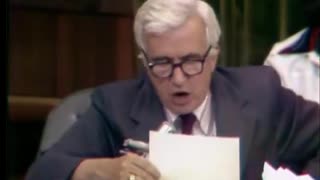 3:50:14
3:50:14
The Memory Hole
1 month agoNixon Impeachment Hearings Day 2 (1974-07-24)
704 -
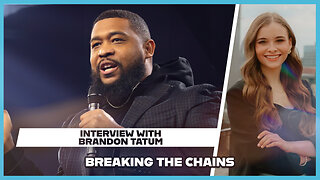 38:57
38:57
PMG
19 hours agoHannah Faulkner and Brandon Tatum | BREAKING THE CHAINS: Exposing the Left’s Manipulation
220 -
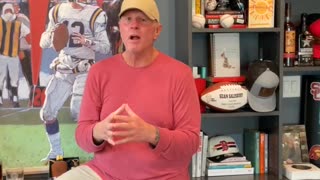 0:50
0:50
Sean Unpaved
14 hours ago $9.18 earnedWelcome “Unpaved w/ Sean Salisbury” to Rumble
52K14 -
 2:10:09
2:10:09
FreshandFit
8 hours agoKicking Out Old Annoying Hoes In Las Vegas!
75.3K104 -
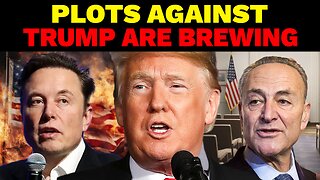 25:53
25:53
Stephen Gardner
10 hours ago🔥BREAKING: Trump HATING LAWYER busted in $17 million money laundering scheme!
48.5K121 -
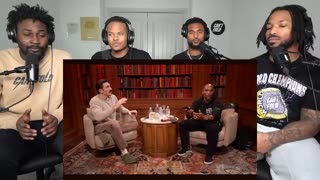 20:10
20:10
CartierFamily
17 hours agoAndrew Schulz DESTROYS Charlamagne’s WOKE Meltdown on DOGE & Elon Musk!
127K101 -
 33:56
33:56
The Why Files
9 days agoLegend of the 13 Crystal Skulls | From Mars to the Maya
86.8K41 -
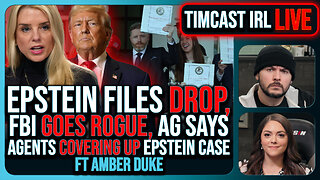 2:56:14
2:56:14
TimcastIRL
11 hours agoEPSTEIN Files DROP, FBI GOES ROGUE, AG Says They COVERED UP Epstein Case w/Amber Duke | Timcast IRL
207K112 -
 1:39:23
1:39:23
Kim Iversen
11 hours ago"Canada's Trump" Is Trudeau’s Worst Nightmare: Is Maxime Bernier the Future of Canada?
94.1K95 -
 DVR
DVR
Bannons War Room
10 days agoWarRoom Live
2.68M447